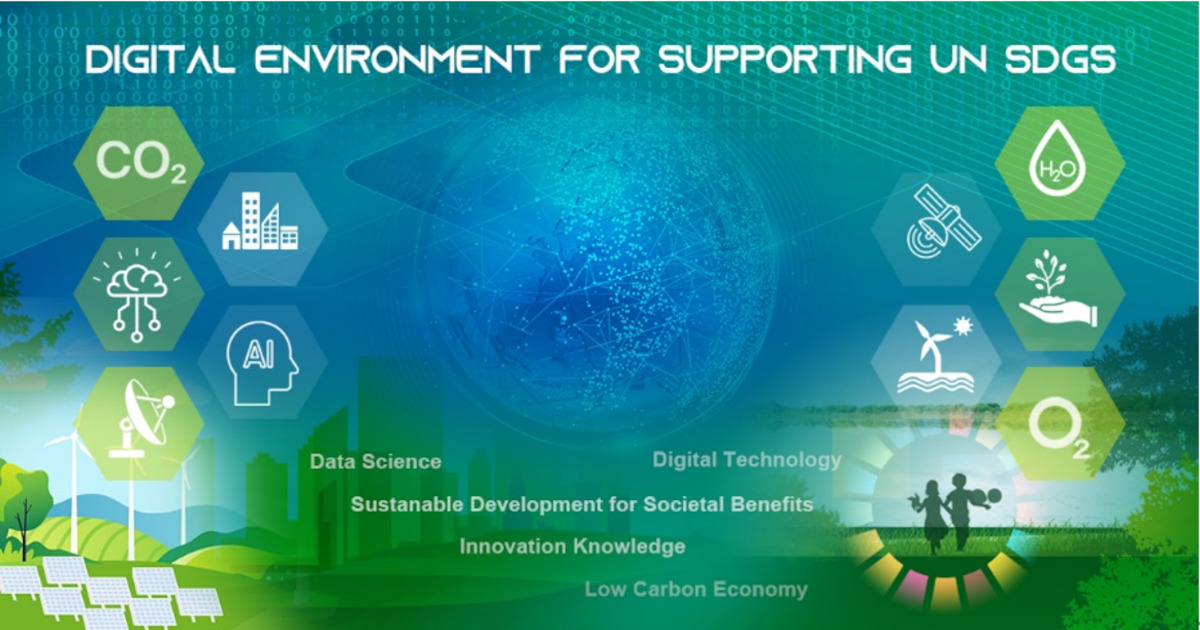Topic Menu
► Topic MenuTopic Editors

2. Key Laboratory of Digital Earth Science, Aerospace Information Research Institute, Chinese Academy of Sciences, Beijing 100094, China

2. Department of Geoscience and Remote Sensing, Faculty of Civil Engineering and Geosciences, Delft University of Technology, 2628 Delft, The Netherlands




Digital Environment Technology for Supporting Regional Sustainable Development

Topic Information
Dear Colleagues,
The processes of the environment exert an immense and profound influence on all human productions and life. The undeniable effects of global warming on international and regional environments, such as water, land and atmosphere, energy style, and economic activities, call for innovative science and technology to mitigate its influences.
The world is currently undergoing sci-tech revolutions and industrial transformations on a larger scale and in greater depth than ever before. As a frontier of science and technology, digital technology is key to meeting the challenges of society, environment, and economy, which is also a vital element for achieving the United Nations Sustainable Development Goals (UN SDGs). Digital technologies, such as earth observations, data science, big data, and artificial intelligence, are integrating into every aspect of society.
The Earth's environment is sensitively impacted by and responds to climate actions, especially south Asian regions with rich hydrometeorological events, snow-ice-covered plateaus, and the Earth's poles. The scientific and decision-making concerns in these areas include: natural physical environmental changes; the interactions between climate actions and the environment; the strategies for climate actions to construct a future society–environment nexus; and how digital technologies, e.g., remote sensing, big data, communication, navigation, and ICT can assist the implementation of environmental assessments.
Digital Environment Technology (DET) employs frontier digital technology, including Big Earth Data, artificial intelligence, aerospace technology, big data, and data science to address the challenges raised by the changes in the Earth's environment, assist in global development and address the UN SDGs.
This Topic aims to deepen and advance our present understanding of essential regional environmental variables and their observations; novel data technology; high value-added data implementation; spatial–temporal variations; international data sharing and data management principles; the impact and interaction between climate actions and the environment; strategies for climate change mitigation and adaption based on the interaction between climate action and environment in a changing world and encouraging the sharing of cutting-edge methodologies and successful practices.
This Topic also welcomes technologies, methods, data, tools, platforms, and systems associated with the above issues. Contributions may be related to remote sensing, in-situ observation, and reanalysis or forecast modeling about the environment.
Papers may also be related to, but not limited to, the following topics:
- Conceptual development of digital environment technology;
- Implementation of environment essential variables by earth observations, AI and data-driven methods;
- Value-added dataset publication about society, the economy, and the environment;
- Distributions, patterns, and spatial–temporal variations of environmental variables;
- Data science and data sharing aspects of data interoperability;
- Exercises on international data sharing and management principles;
- Applications and impact of big data on water security, disaster mitigation, food security, land and coast management, energy and green economy, etc.;
- Big earth data supporting UN SDGs, especially data and innovative technology used to support SDGs 6, 7,12, 13, 14, and 15;
- Technologies, methods, tools, and platforms associated with the above issues.
Prof. Dr. Yubao Qiu
Prof. Dr. Massimo Menenti
Dr. Hongsheng Zhang
Dr. Paola De Salvo
Dr. Salvatore Gonario Pasquale Virdis
Dr. Andrea Marinoni
Prof. Dr. Dunhui Xiao
Prof. Dr. Xiyan Sun
Topic Editors
Keywords
- climate actions
- remote sensing
- data science
- AI
- environment
- digital commons
Participating Journals
| Journal Name | Impact Factor | CiteScore | Launched Year | First Decision (median) | APC |
|---|---|---|---|---|---|

AI
|
3.1 | 7.2 | 2020 | 17.6 Days | CHF 1600 |

Land
|
3.2 | 4.9 | 2012 | 17.8 Days | CHF 2600 |

Remote Sensing
|
4.2 | 8.3 | 2009 | 24.7 Days | CHF 2700 |

Sustainability
|
3.3 | 6.8 | 2009 | 20 Days | CHF 2400 |

Water
|
3.0 | 5.8 | 2009 | 16.5 Days | CHF 2600 |

MDPI Topics is cooperating with Preprints.org and has built a direct connection between MDPI journals and Preprints.org. Authors are encouraged to enjoy the benefits by posting a preprint at Preprints.org prior to publication:
- Immediately share your ideas ahead of publication and establish your research priority;
- Protect your idea from being stolen with this time-stamped preprint article;
- Enhance the exposure and impact of your research;
- Receive feedback from your peers in advance;
- Have it indexed in Web of Science (Preprint Citation Index), Google Scholar, Crossref, SHARE, PrePubMed, Scilit and Europe PMC.



